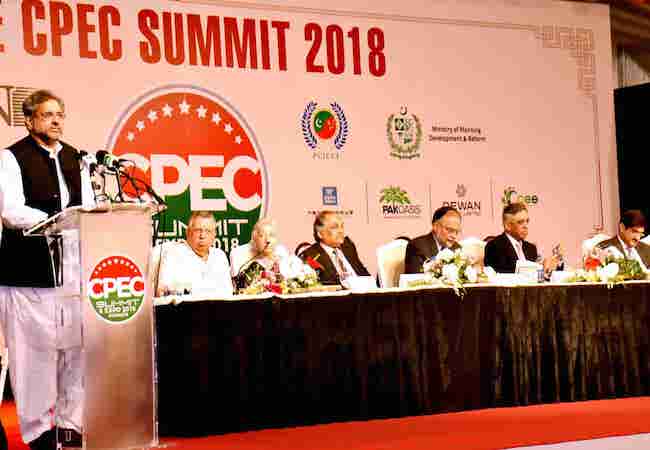
By Qura tul ain Hafeez
China-Pakistan Economic Corridor (CPEC) is the flagship project of China’s Belt and Road initiative, prioritized by both the Governments of China and Pakistan to build a China-Pakistan community of shared destinies. The strategic partnership under the CPEC envisages number of projects among which Energy Security, Infrastructural Development , Connectivity, Trade, Industrial Parks, Agricultural Development , Poverty Alleviation and , Tourism are highly prioritized. Recently the CPEC summit 2018 was held in Karachi on April 23, 2018 to discuss the importance of CPEC and to analyze updates about the progress and development of this project. Perhaps this was the first such event of its kind in which representative from all the provinces participated. The summit not only discussed the progress and development of the CPEC butdeliberated upon the issue of regional connectivityas the key component of the CPEC. On recalling the last five years’ journey of CPEC up till now, one can infer that indeed CPEC is a chain of connectivity not only within Pakistan but across the region as well. The summit also concluded that Pakistan and China are planning to extend CPEC towards Afghanistan as CPEC is not only about economic growth, but also about community building.
Analyzing the outcome of this summit, one discovers that under CPEC, the country has completed two power projects in Sindh, while another is on its way towards completion.CPEC has resulted in the optimal utilization of two commercial ports and the opening of Keti Bunder. Along with this, the development of commercial portsis also in line with the CPEC plan. The project pledges provincial harmony and timely cooperation and facilitation in this regard. As far as the electric power is concerned currently930 megawatts of wind energy is produced in Sindh alone for the national grid. Moreover a large chunk of electric power comes from those three Projects which are part of early-harvest program. In addition to this some 300MW isgenerated through wind power projects and would be part of the grid once the projects are completed in October 2018.
Following this progress rate CPEC is economically beneficial for all theprovinces of Pakistan. KPK is contributing nearly 15pc of Pakistan’s natural gas output. In hydropower, KP has the potential of producing 30,000MW of energy.The two hydropower projects located at Chitral are also part of the CPEC framework.
Moreover another important aspect which was analyzed in this CPEC Summit 2018 is the idea of a separate ministry for logistic and transport so that this massive demand for the logistic and transport can be well managed. Once this separate ministry is formed, the work will be done in the shortest possible time thus resulting in faster growth. Businessmen, stakeholders and industrialist also showed their interests in promoting business through CPEC. Surely there is a need for joint ventures between local and Chinese companies to enhance Pakistan’s industrial base and productivity.
Eventually once the CPEC project is completed Pakistan will become a hub for transshipment trade. Most of Pakistan’sposts- through which trade is being carried out, are complaint to Transports Internationaux Routiers (TIR) or International Road Transports. Therefore there is no issue of compliance or connectivity under TIR. It will be easier to import goods and products in other countries thus developing more options for Trade and investment through CPEC.
The initial Phase of CPEC projects of the early harvest program are completed. Now the second phase the long term plan of the CPEC has been started that focuses on industrial activity and agriculture which would be completed by 2025. Currently work on the Long term Plan is under way, after that in order to take its final shape in 2030 CPEC would be completed and people to people contact will develop, thus resulting in shared trade communities.
Qura tul ain Hafeez has an M Phil in international relations from Quaid-I Azam University Islamabad. She currently works as a researcher at Strategic Vision Institute in Islamabad. Her domain of work include China as an emerging global power, Sino-Pakistan strategic and civil nuclear relations, South Asian strategic issues, regional integration, nuclear issues including nuclear non-proliferation and NSG, foreign policy analysis, and international politics.




